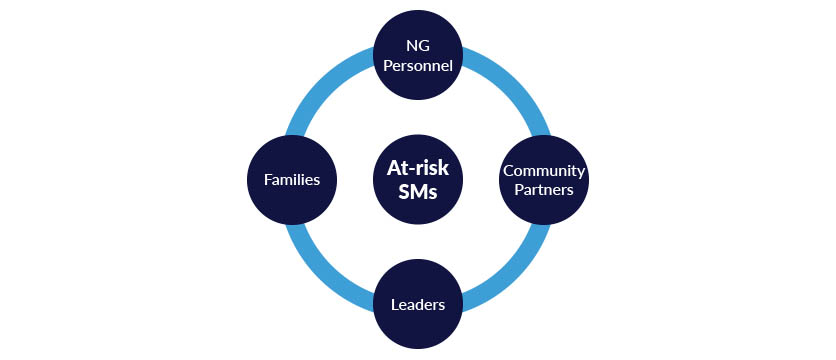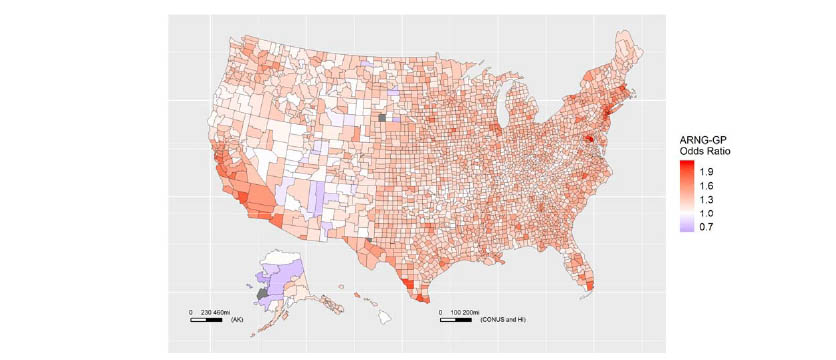Culture and Climate
Military Climate, Unit Cohesion and Morale

Examples:
- Identifying metrics to assess workforce well-being.
- Developing approaches to measure unit cohesion using surveys and administrative data.
- Interviewing current and former military leaders about their efforts to maintain unit morale.
- Identifying barriers and facilitators to inclusive climates.
Challenges in the DOD’s Efforts to Promote Diversity and Inclusion

Examples:
- Assessing barriers to minority and female participation in special operations forces and aviation.
- Understanding the scope and nature of prohibited extremist activities.
- Examining retention and promotion outcomes by race/ethnicity and sex.
- Analyzing the impact of past policy changes on promotion diversity.
Research Spotlight
Assessing the Impact of Removing Demographic Indicators from Military Selection Boards

In this congressionally mandated study, IDA assessed the potential impact of removing data that directly or indirectly identify race, ethnicity, and gender in promotion/selection procedures (e.g., removing names and pronouns). IDA’s quantitative analyses examined the impact of prior policies to partially blind promotion boards and found no significant impact on minority officer promotion rates. Further, qualitative lines of effort suggested that removing demographic indicators would not be feasible and that other actions to strengthen board procedures would be more fruitful.
Harmful Behavior Prevention
Multi-disciplinary research to inform DoD policy

Examples:
- Evaluating prevention programs, practices and policies.
- Developing repositories of evidence-informed prevention activities.
- Analyzing sexual assault investigative interview and case files to improve interview training.
- Assessing how alcohol prices on military installations affect incidence of alcohol misuse and other destructive behaviors.
- Conducting a survey on social interactions and sexual behavior to understand risk factors for harmful behavior.
- Assessing the state of knowledge on factors associated with risk of sexual harassment or assault.
Research Spotlight
Providing Technical Assistance to Support Program Evaluation in the National Guard

Since 2018, IDA has supported the National Guard Bureau’s (NGB) Warrior Resilience and Fitness (WRF) Division by developing, refining, and implementing a process to identify and evaluate state-developed prevention activities. IDA has provided technical assistance to more than 50 pilot programs. Technical assistance consists of recommending metrics and developing data collection tools, analyzing outcome data, and synthesizing and presenting results for NGB leadership. These efforts have already contributed to regional- and national-level adoption of several state-developed programs.
See our full report.
Research Spotlight
Statistical Methods Inform Suicide Prevention Planning

To help the National Guard Bureau (NGB) decide how suicide prevention funding and programs would best be distributed across the U.S., IDA researchers conducted quantitative analyses of suicide rates in the U.S. Army National Guard (ARNG) and in the general population. The analysis revealed that while the ARNG suicide rate was higher than in the general population, differences in age, gender and geographic distribution could explain much of the difference. Accordingly, the team recommended a set of prevention programs with evidence of success among the general population.
See our research summary and full report.
Research Spotlight
Sexual Misconduct in the Military: Contextualizing the Problem and Advancing the Dialogue

Sexual misconduct is a significant social problem. It can be life-altering for those who experience it, and it can cause significant strain in the communities where it happens. Military policymakers called for an evidence-based understanding of the individual and contextual factors that may contribute to sexual misconduct. In response, IDA reviewed hundreds of prior studies to help the Army Resilience Directorate and the DOD’s Sexual Assault Prevention and Response Office understand what is known — and not known — about the causes, contexts and treatment of sexual misconduct among both military and civilian populations.
See our report to learn more.
